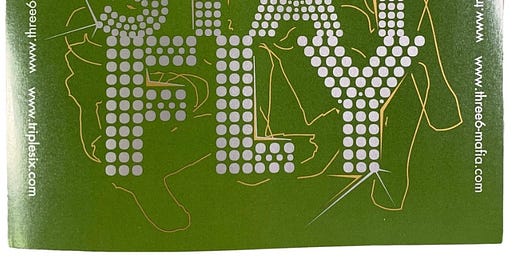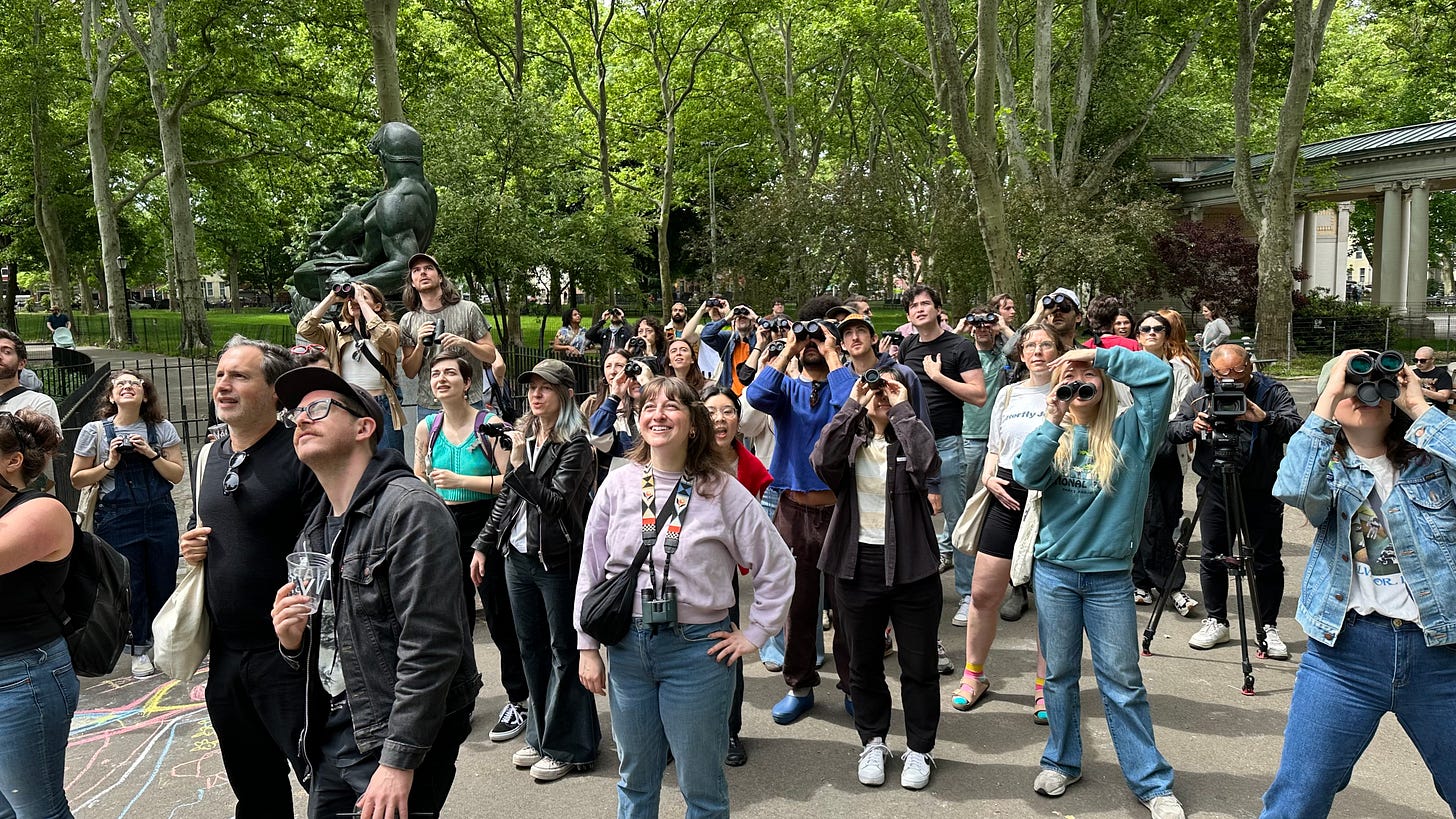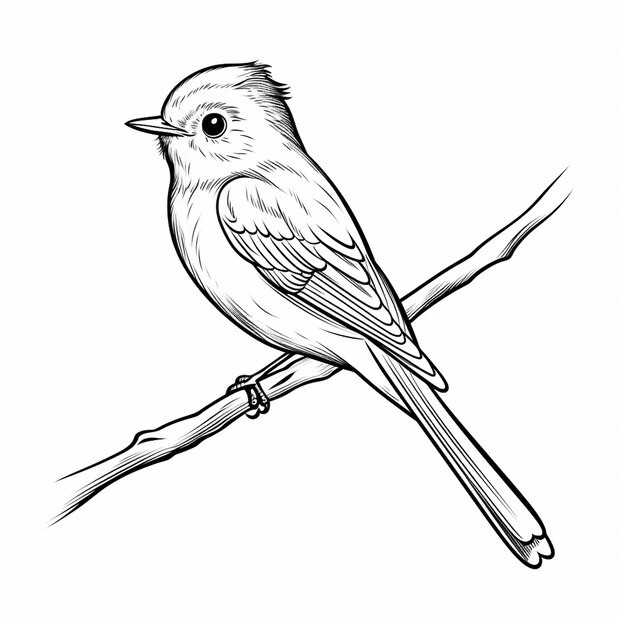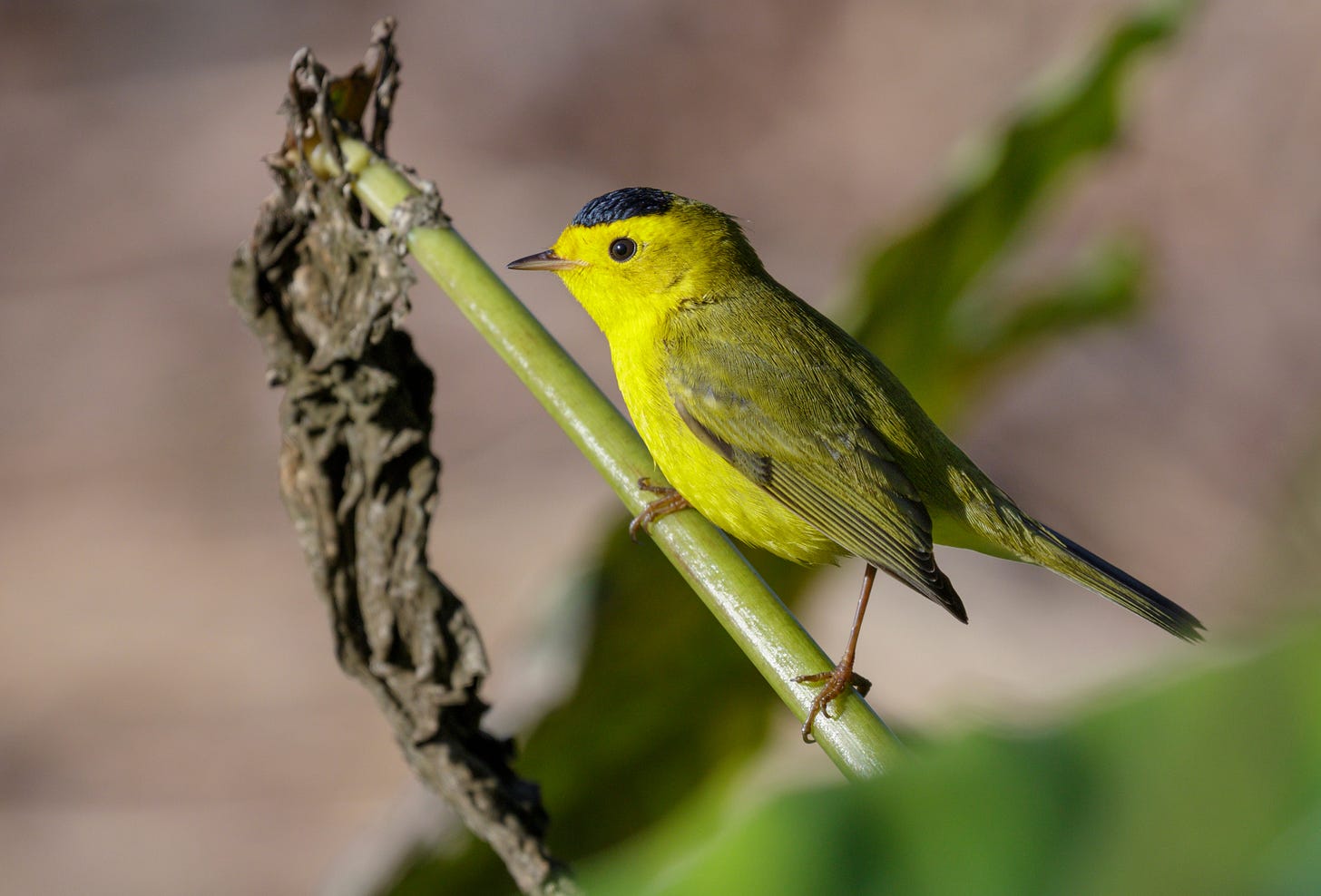Corporate humanoid [dead inside]: It’s Q2.
Source, Great Unity, the god-babe herself—Mama Natura [wordless, through fungi hyphae]: Current Japanese micro-season (out of 72) is Bamboo shoots sprout. As for McGolrick Park, perhaps New York City and even larger swathes of the eastern US, we notice—
MICRO-SEASONINGS
Eastern Wood-Pewee arrives • Hooded Warbler visits • First Canada Warbler • Bay-breasted Warblers return • First flyover swallows • Europeans Starlings, House Sparrows and Mourning Doves fledge
Did we miss anything? We’ll declare this micro-season’s “official” name at year’s end.
Pewee?! Yeah it’s a funny name — listen to its call for an explanation — now try to notice that sweetness in McGolrick through June and bigger NYC parks through October. More below
MAY 17, 2024 — SATURDAY
Conditions: Sneaky sweaty • Attendance: 155 at peak 🤘😅 • Vibrations: OHHH CANADAAA
Saturday birds: Canada Warbler · Chestnut-sided Warbler · Northern Parula · American Redstart · Bay-breasted Warbler · Black-throated Green Warbler · Eastern Wood-Pewee · Gray Catbird · Great Crested Flycatcher · Chimney Swift · Ovenbird · Scarlet Tanager (fem) · Tree Swallow (flyover) · Yellow Warbler · Red-eyed Vireo · Swainson's Thrush · Laughing Gull (flyover) · Double-crested Cormorant (flyover) ·… And the virtually always present in urban parks like McGolrick: Rock Pigeon, European Starling, American Robin, House Sparrow, Mourning Dove. Learn these last 5 and you’ll be set to notice less common birds.
Pic of the day:
MICRO-LESSON: FLYCATCHERS
WARNING: This shorty lesson is tricky. We’re trying it because an Eastern Wood-Pewee, a type of flycatcher we expect to hang with through June, recently returned to McGolrick Park (and blessed yesterday’s finale)
Spend enough time around avid birders and you’re bound to hear the word “empid.”
It’s a strange word made stranger by the hushed, frustrated, frightened tones in which birders wrap it. Empid is short for the genus empidonax. According to Wikipedia that’s a latin portmanteau from empis, "gnat" + anax, "master". Cool. Because we’re not trying prove anything, let’s just call them flycatchers.
Sidebar: You ever open a bird book like the holy text Sibley Guide and been overwhelmed by the compendium of seemingly indistinguishable bird images? The good news is that in most cases, species that look too alike—say, Eastern and Western Bluebirds—occupy different ranges. Phew.
Flycatchers are different. Their ranges overlap and they are virtually indistinguishable in average light. Dang. Observe:
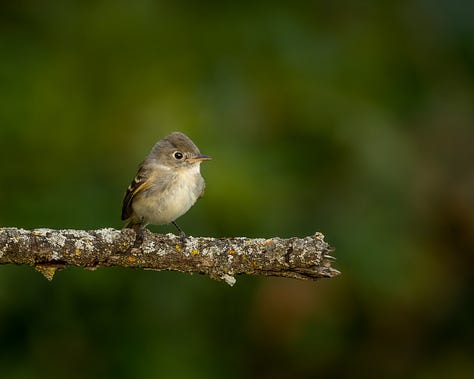

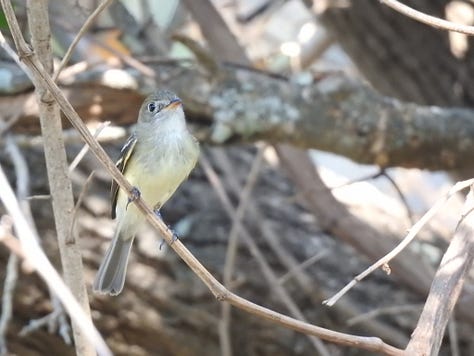
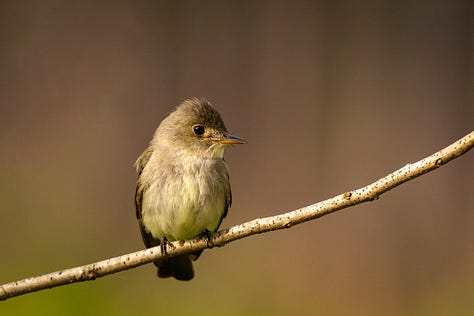
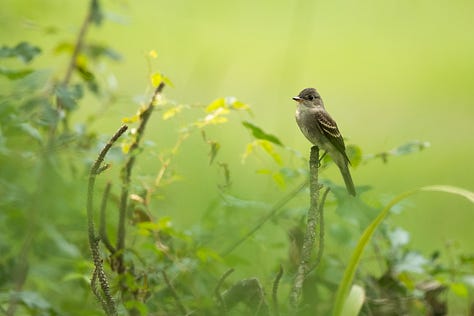
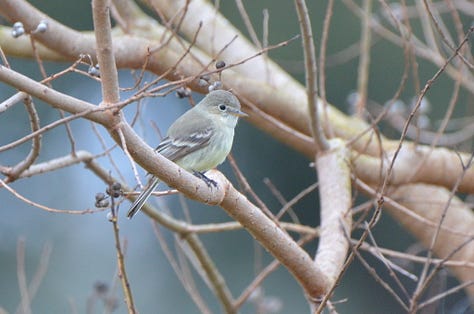
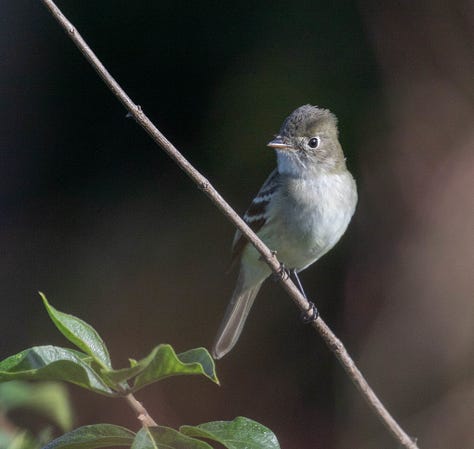
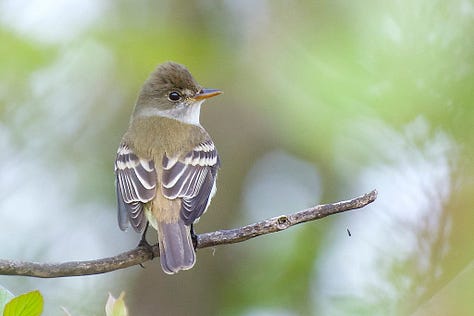
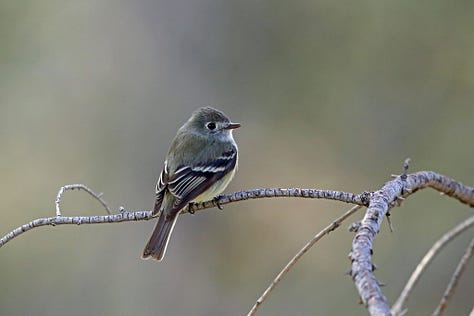
Honestly we forget which species are in this grid. There are at least 3 or 4 and they’re all findable in NYC. See the problem?
Flycatcher tips:
Just start by getting a feel for the flycatcher lük. Review the above grid. Notice: wing bars, long tail, oft-ringed eye, occasional crested head, pointy/flat bill. Gray-ish look often subtly washed in yellow or olive
Try to flycatch them in the act. Flycatchers do something called sallying, where they launch from then return to the same branch
The only foolproof way to differentiate the virtually identical species is by ear. (Newbies—try the Merlin app’s Sound ID feature.) So if you find yourself must knowing an identity, pray to the Birdgods for vocalizations
The important thing with flycatchers is to know you’re in for identification trouble. And that’s fine. This is PhD level shit that f.f.s. merits its own 163-page book for only 17 species! Bask in the great mystery. Answers are overrated. Take pleasure in the fact that these humble, agile, beautiful birds frustrate the most avid of birders.
Okay so Eastern Wood-Pewees aren’t technically empids. It’s a whole thing. Don’t worry about. Just try to get a feel for what they look like, and of course re-listen to their namesake call—we heard it on Saturday—here
One more thing. Devotees might remember a Great Crested Flycatcher. Where empid type flycatchers are small-ish, there’s another type called Tyrant Flycatchers who are—you guessed it—big. Like, American Robin big. They can have similar body shapes and features as empids, they do sally, and like the Great Crested they sometimes bear the flycatcher name. We’ll cover them another time. For now just know the other biggie findable in NYC alongside the Great Crested is the Eastern Kingbird
ON NOTICE
Wilson’s Warbler
Wilson’s Warblers historically visit McGolrick in May’s latter half. The species winters in Mexico/Central America and the southern coasts of Louisiana and Texas, before crossing the United States en route to—besides sections of the northwest and Maine—Canadian summers. Observe:
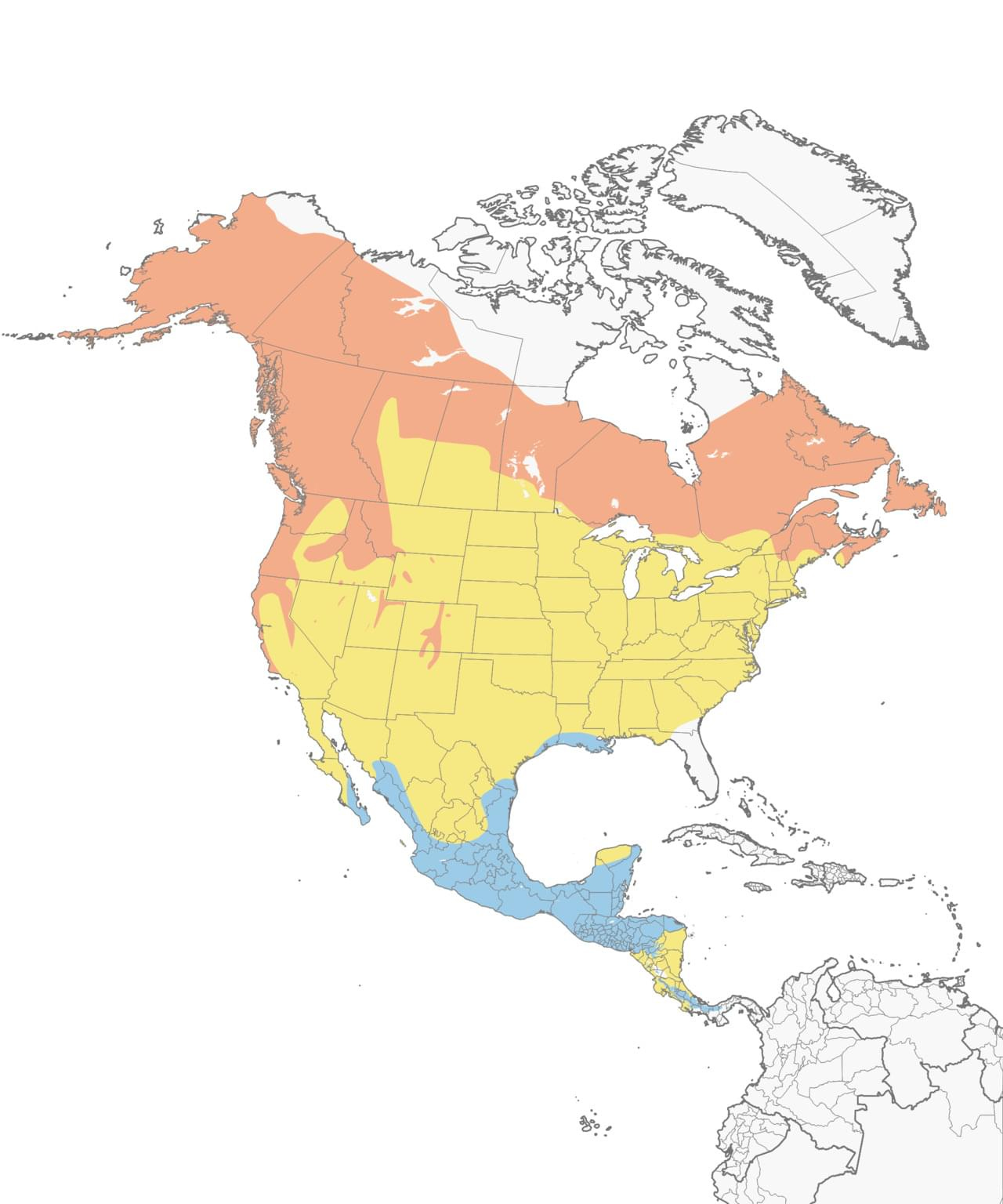
Cornell “Cool Fact” that endears Willies to your correspondent: “When most songbird nestlings are ready to leave the nest, they hop out and don’t return, but some Wilson’s fledglings head back to the nest for a night or two.”
So, for the next few weeks, any time you zoom-in on a small, yellow bird—check the cap and back for black and olive, respectively.
We’re making this prediction based on McGolrick’s frequency charts, found here
Check NYC’s most common 22 warblers to see how Wilson’s compare to other warblers
UPDATES, ANNOUNCEMENTS, REQS
LASTLYS
- Shoutout baddies Francesca and Kinneret, who correctly identified the vireos over in our IG lesson. Way to notice, gals! We’re awarding them tees and tix to Cactus Store/Nonhuman Teachers’ May 22nd event HORT/CULTURE , where
Jared Margulies will give a multimedia presentation on his 2023 book The Cactus Hunters, which explores the illegal trade in succulents, and the passion that drives it
Corey Fogel will perform John Cage's seminal 1976 piece Branches, which calls for the use of amplified seed pods, cacti, and other plant materials selected by the performer(s)


